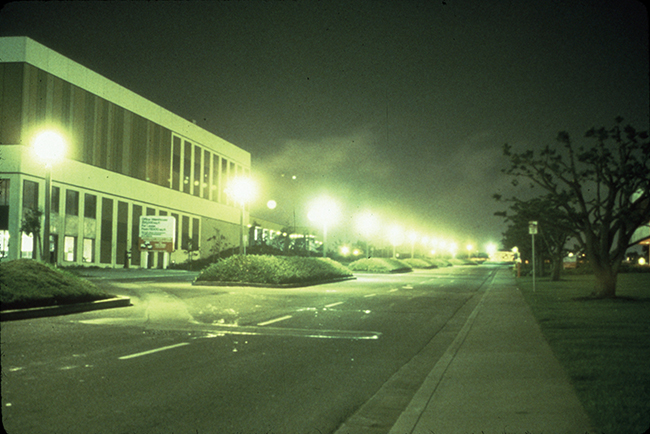Lighting

Image provided courtesy of the International Dark-Sky Association
All ECFs need adequate overhead lighting to help drivers navigate at night. Lighting is also required for guards to perform their security functions. Lighting should be complete and continuous and provide a combination of low- and high-intensity light so that motorists and guards can see each other.
Color Rendition Index (CRI)
The ability to identify and distinguish between colors is important at ECFs. Color Rendition Index (CRI) measures the ability to distinguish between colors. A light source with a CRI greater than 65 should be used in the ID check areas; and a light source with a CRI greater than 50 should be used elsewhere in ECFs. "White" lighting produces higher CRI than "yellow" lighting.
Controlled Lighting
Illumination is measured in foot-candles. The level of illumination depends on the tasks being performed and the required visibility to perform those tasks. Different areas of ECFs require different levels of illumination.
Transitional Lighting
Transitional lighting is necessary on ECF approaches and departures to minimize blinding effects as drivers travel into and out of brightly illuminated ECFs. High-mast lighting should be considered because it provides broader and more natural light distribution. Life-cycle costs should also be considered. One high-mast light can replace up to six conventional lights; however high-mast lights can cost five times more than conventional lights.


